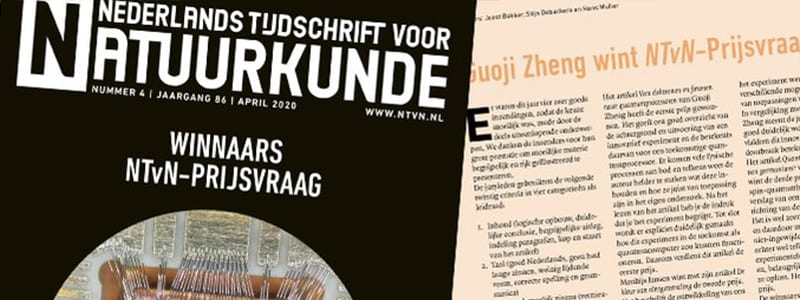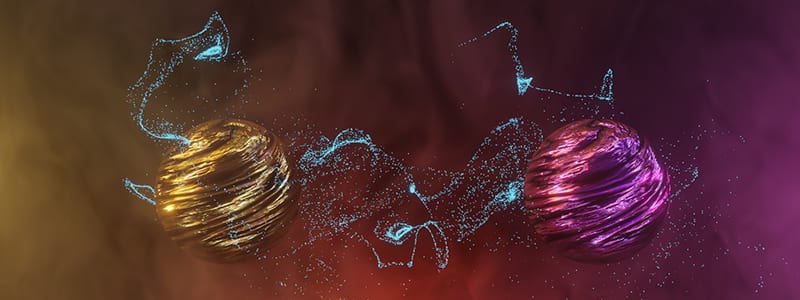17.04.2020Uncategorized
Guoji Zheng and Nico Hendrickx win best article prize in the Dutch Journal of Physics competition

Guoji Zheng (PhD student in Vandersypen lab) and Nico Hendrickx (PhD student in Veldhorst lab) have been awarded first and third place respectively in this year’s Dutch Journal of Physics (NTvN) competition. The PhD students and postdocs that participated in the competition were asked to write a clear article on their physics research. The latest April edition of the NTvN magazine focuses on the price-winning articles, for which Zheng and Hendrickx were granted prices of 1000 euros and 500 euros respectively.
The jury gave overwhelmingly positive feedback on both Zheng’s and Hendrickx’s articles. The jury praised Zheng’s article ‘From electrons and photons to quantum processors’ for presenting a clear overview of the background and execution of his innovative research experiment. Zheng explains: “Electrons and particles of light are promising building blocks for quantum computers. My article summarizes the work that was done in the past years, where we strongly coupled an electron spin, which is a quantum property of electrons, to a single particle of light. In addition, we were able to measure electron spins 100x faster than previously achieved on a semiconductor chip using similar measurement techniques.” The jury was also very positive about Zheng’s explanation on the importance of his research experiment for building a future quantum computer.
The jury described Hendrickx article ‘Quantum computation, the comeback of germanium?’ to be a fascinating report about an innovative step towards the quantum computer. In his article, Hendrickx explains his research on so-called ‘electron holes’ in germanium. These electron holes are not actual particles, like electrons and light particles, but rather represents the absence of an electron. Hendrickx explains: “Electron holes in germanium have some very special properties which are advantageous when making quantum bits (the building blocks of a quantum computer). My article explains how we demonstrated that using holes, we can perform all calculations necessary for quantum computation.” The jury expressed particular praise for Hendrickx’s clear explanations of the experimental difficulties and how his research solves them.
Read their articles (in Dutch) in the April 2020 edition of the NTvN magazine, or here and here.
